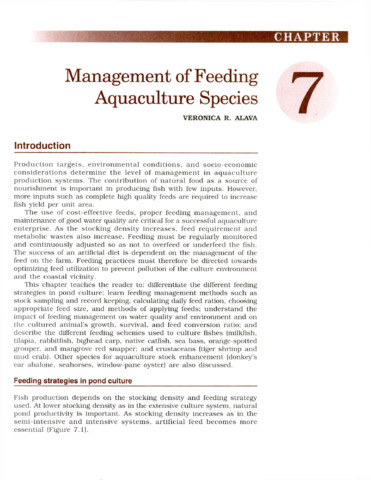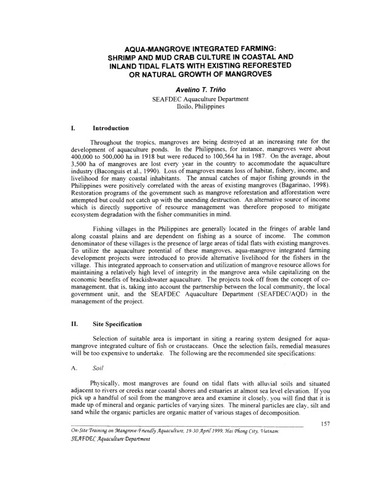Quality assessment of newly hatched mud crab, Scylla serrata, larvae
- Global styles
- MLA
- Vancouver
- Elsevier - Harvard
- APA
- Help

View/
Date
2018Page views
2,422ASFA keyword
AGROVOC keyword
Taxonomic term
Metadata
Show full item record
Share
Abstract
Starvation and exposure to formalin were investigated as possible stress tests for evaluating the quality of mud crab, Scylla serrata, larvae. For the starvation stress test, newly hatched zoeae stocked in 150-ml containers were either starved or fed rotifers. Similarly, newly hatched zoeae were stocked in containers with seawater of 0 (control), 20, 30 and 40 mg/L formalin for the formalin stress test. The zoeae from the same batches were used for seed production to monitor their performance and validate the results of stress tests. Starvation was found to be unsuitable for larval quality evaluation. However, the impact of initial food deprivation on the newly hatched larvae indicates that feeding immediately after hatching is necessary for mud crab larvae. Exposure of larvae to 40 mg/L formalin for 3 hr appeared to be a reliable and practical method for larval quality assessment as the survival of larvae in the mass production tanks validated the classification of good and poor quality batches in the stress tests. On this basis, a hatchery operator can decide which batch should be cultured further. Finally, there appears to be a link between the quality of larvae and the performance at the megalopa and early juvenile crabs.
Suggested Citation
Quinitio, E. T., dela Cruz-Huervana, J. J., & Parado-Estepa, F. D. (2018). Quality assessment of newly hatched mud crab, Scylla serrata, larvae. Aquaculture Research , 49(1), 75-80. https://doi.org/10.1111/are.13434
Type
ArticleISSN
1355-557X; 1365-2109Collections
- Journal Articles [1258]
Related items
Showing items related by title, author, creator and subject.
-
Management of feeding aquaculture species
Alava, Veronica R. (Aquaculture Department, Southeast Asian Fisheries Development Center, 2002)This chapter teaches the reader to: differentiate the different feeding strategies in pond culture; learn feeding management methods such as stock sampling and record keeping, calculating daily feed ration, choosing ... -
Philippine National Standard: Organic aquaculture
Bureau of Agriculture and Fisheries Standards (Bureau of Agriculture and Fisheries Standards, 2016)The Philippine National Standard (PNS) for Organic Aquaculture (PNS/BAFS 112:2016) was originally prepared and adopted in 2012. Organic aquaculture encourages polyculture production system, promotes the use of indigenous/endemic ... -
Aqua-mangrove integrated farming: Shrimp and mud crab culture in coastal and inland tidal flats with existing reforested or natural growth of mangroves
Triño, Avelino T. (Aquaculture Department, Southeast Asian Fisheries Development Center, 2000)Throughout the tropics, mangroves are being destroyed at an increasing rate for the development of aquaculture ponds. In the Philippines, for instance, mangroves were about 400,000 to 500,000 ha in 1918 but were reduced ...






